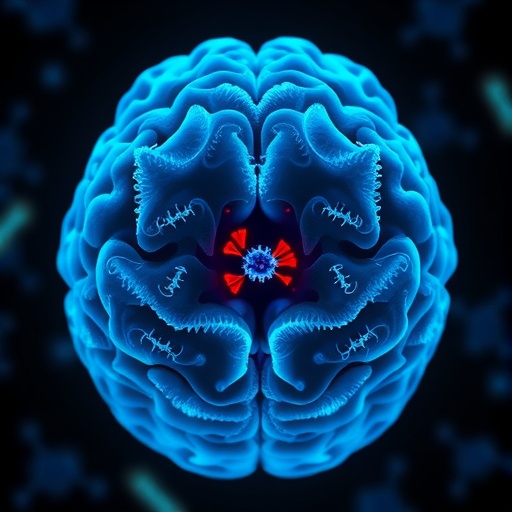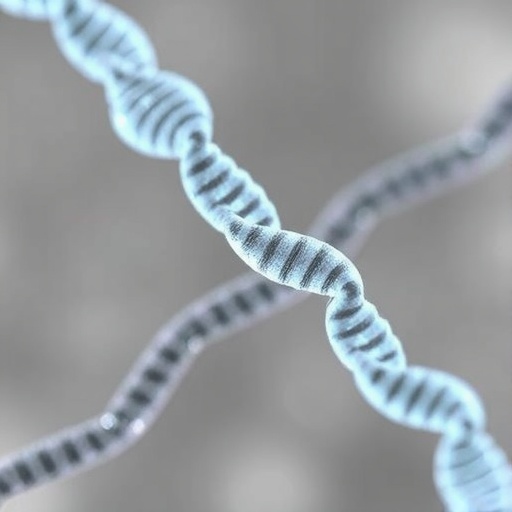In the rapidly evolving landscape of digital entertainment, Internet Gaming Disorder (IGD) has emerged as a pressing psychological and physiological concern. A groundbreaking study published in BioMedical Engineering OnLine sheds new light on the complex interactions between tolerance-related psychological traits and peripheral nervous system dynamics during online gaming. By leveraging advanced biomedical signal processing techniques, researchers have unveiled how subtle fluctuations in autonomic nervous activity correlate with the intense emotional and motivational states experienced by individuals with IGD during gameplay.
IGD, characterized by compulsive and persistent engagement in internet gaming despite negative consequences, has rapidly become a focal point for mental health professionals worldwide. While the psychological ramifications of IGD have been increasingly studied, a significant gap remains in understanding the physiological feedback mechanisms that undergird persistent tolerance symptoms—where more intense gaming stimuli are required to achieve the same level of satisfaction or emotional relief. This novel investigation utilizes high-resolution temporal analysis to bridge this critical knowledge gap.
At the core of this study lies the innovative use of instantaneous pulse rate variability (iPRV) techniques, which provide unprecedented time-resolved insights into peripheral autonomic nervous system activity. Conventional methodologies often struggle to isolate rapid and minute physiological changes, especially under non-linear and non-stationary conditions typical of real-time gaming scenarios. Utilizing complementary ensemble empirical mode decomposition alongside a normalized direct quadrature algorithm, the research team successfully parsed these dynamic biological signals during controlled gaming sessions.
The experimental design involved 46 participants—26 healthy controls and 20 individuals diagnosed with IGD—who engaged in two escalating difficulty levels of an online game, denoted as G1 and G2. The choice of these levels aimed to simulate varying cognitive and emotional demands reflective of real-world gaming challenges. Behavioral assessments revealed that the IGD cohort experienced pronounced fear of missing out (FoMO) and a relentless pursuit of exceptionally high gaming standards. These attributes collectively form the inadequacy component of tolerance, reflecting deep-seated motivational pressures driving addictive behaviors.
Intriguingly, a significant positive correlation between this inadequacy dimension and overall IGD risk was identified, highlighting the psychological substrate fueling persistent gaming. Participants with IGD also rated the second level, G2, as notably more challenging, underscoring how heightened game complexity exacerbates emotional and physiological responses. This differentiation between game levels provided critical context for analyzing the coupling between subjective experience and autonomic modulation.
Biophysiological data collected during the initial gaming phase (G1) revealed a compelling link between emotional intensity and the temporal dimension of tolerance symptoms. Elevated feelings of emotional arousal corresponded to increased autonomic nervous system engagement, as detailed by augmented instantaneous pulse rate variability measures. These findings illuminate how short bursts of emotional intensity may create feedforward loops that reinforce gaming motivation and exacerbate compulsivity.
At minute six of the G1 stage, spectral analysis of the iPRV signal’s frequency components disclosed a nuanced interplay between autonomic branches. Specifically, the normalized very high-frequency band showed a negative correlation with IGD risk, while the normalized low-frequency (nLF) band correlated positively. The nLF band’s prominence suggests heightened sympathetic nervous system tone, often implicated in stress-related activation, which intriguingly aligned with the psychological inadequacy dimension of tolerance.
This bi-directional relationship between psychological, emotional, and physiological parameters posits a model in which tolerance-induced motivational states amplify sympathetic arousal, potentially perpetuating the addictive cycle. Essentially, the study proposes that the peripheral autonomic nervous system serves as both a mediator and amplifier of the internal struggle to maintain gaming satisfaction, thus sustaining the pathological gaming behavior characteristic of IGD.
From a broader neuroscience perspective, this research underscores the importance of capturing psychophysiological dynamics with fine temporal precision. Unlike traditional metrics that average signals over minutes or hours, the instantaneous measures employed here unmask rapid neural-autonomic feedback loops that traditional methods would obscure. This advancement opens new avenues for dynamic monitoring and intervention in IGD and other behavioral addictions.
Furthermore, these insights have crucial clinical implications. Understanding how tolerance-related emotional states drive autonomic arousal suggests that therapeutic strategies targeting these physiological pathways—such as biofeedback or autonomic modulation through non-invasive neuromodulation—could attenuate the underlying compulsive drive. Future research may harness these findings to develop individualized treatment protocols incorporating real-time physiological monitoring.
In summary, this pioneering study reveals that the motivational and emotional components underpinning tolerance in Internet Gaming Disorder are intimately linked with dynamic peripheral autonomic nervous system activation. By decoding these rapid physiological signatures during gameplay, the research offers an unprecedented window into the short-term psychophysiological mechanisms fueling persistent addictive behavior. This confluence of innovative methodology and neurobehavioral insight positions the study as a milestone in behavioral addiction research, promising to influence prevention and treatment paradigms in the digital era.
As Internet gaming continues to captivate millions worldwide, understanding the biological substrates of addiction becomes ever more critical. This work stands at the frontier of integrating psychological theory with cutting-edge biomedical engineering techniques, highlighting how nuanced, time-resolved physiological data can illuminate the dark corners of compulsive behavior. For gamers, clinicians, and researchers alike, these findings beckon a new era of precision diagnostics and personalized interventions for IGD.
The study’s robust analytical framework and comprehensive experimental design set a methodological benchmark for future research endeavors. By dissecting the tolerance phenomenon both psychologically and physiologically in the context of real gameplay, the researchers have provided a compelling model that balances complexity with clinical relevance. This dual focus enhances our capacity to detect early warning signs and tailor interventions before addiction entrenches itself fully.
Ultimately, this research underscores the vital importance of interdisciplinary collaboration—in this case, melding psychology, neuroscience, and biomedical signal processing—to unravel the multifaceted nature of emerging behavioral disorders like IGD. As technology further entwines with daily life, such integrative approaches will be indispensable to promoting mental health and well-being in the digital age.
Subject of Research: Internet Gaming Disorder (IGD), focusing on the relationship between tolerance-related psychology and peripheral autonomic nervous system dynamics during online gameplay.
Article Title: The tolerance-related psychology and dynamic activity in the peripheral nervous system of Internet gaming disorder during playing online games
Article References:
Chi, H.M., Hsiao, T.C. The tolerance-related psychology and dynamic activity in the peripheral nervous system of Internet gaming disorder during playing online games. BioMed Eng OnLine 24, 135 (2025). https://doi.org/10.1186/s12938-025-01471-9
Image Credits: AI Generated
DOI: https://doi.org/10.1186/s12938-025-01471-9
Keywords: Internet Gaming Disorder, Tolerance, Peripheral Nervous System, Instantaneous Pulse Rate Variability, Autonomic Nervous System, Emotional Intensity, Biomedical Signal Processing
Tags: advanced biomedical signal processingcompulsive gaming behaviordigital entertainment and psychologyemotional states in gaminggaming addiction researchinternet gaming disordermental health and gamingperipheral nervous system dynamicsphysiological feedback mechanismspulse rate variability techniquestolerance-related psychological traitsunderstanding physiological changes in gaming.





